Walnut Biscotti is a twice-baked cookie sprinkled with walnuts, folded with flour and polenta, and flavored with orange zest. This baked good can be customized to be hard and crunchy or soft and crumbly. They are perfect as holiday gifts or on cookie trays, and can be eaten for breakfast or afternoon tea or even as a sweet treat after dinner!
As we head into the holiday season, I’m sure that we’re all busy baking cookies and biscuits for our various parties and gatherings. One of the most prolific and versatile treats is the biscotti. There are a few desserts (yes you read that right) that are more adaptable than the biscotti. You can serve biscotti with sweet wine or coffee, à la mode with ice cream, as a parfait with cream, yogurt, and fruit, as an accompaniment to a fruit and cheese platter, and if you’re so inclined as a super indulgent s’more.
My own journey with Walnut Biscotti started with a misunderstanding more than 20 years ago when my close Italian friend introduced me to her homemade, twice baked biscuit made of fennel and called it Biscotti. Having sampled biscotti at several cafes, I’d always thought that the biscotti was a specific type of cookie that is different from a biscuit. Imagine my surprise when my friend explained that biscotti was a general Italian term for biscuits, derived from the Latin “bis,” meaning twice, and “coctum” or cooked.
Origin:
Latin, you say? Indeed, biscotti has its origins in ancient Rome. Traditionally made with almonds, many historians confirm that these twice-baked hard treats were popular in Rome. They spread through the rest of Europe with Roman civilization, when dried bread or biscuits were served as a staple for long journeys.
From Pliny to Louis XIV, armies, merchants, and travelers used these as staples, so much that the biscotti came in many forms and variations, all well-known. We’ve called them: Rusk, Zweiback, Mandelbrot, Ship’s Biscuits, and Hardtack ~ all based on a similar purpose and method. Even Christopher Columbus had some version of biscotti on his journey to the West because the second bake draws out moisture making the food, mold resistant. The second bake also bequeaths the biscotti its most characteristic attribute: that hard, sturdy, and that oh-so-satisfying crunch that makes it ideal for dunking.
It wasn’t until we took a road trip all around Italy many years ago, that I realized that the biscotti that was served all over the world had their origins in the Tuscan city of Prato and were called Biscotti di Prato or more commonly the cantucci or cantuccini. So yes, technically, we’re all eating biscotti, but we’re consuming a specific interpretation. Go to South Tuscany, around Lazio, and you come to a different interpretation made with lemon zest, hazelnuts, and olive oil. Go to the western isles, and you’ll find that they use chocolate and figs. In Naples, home of the pizza, you’ll find that they use honey, orange peel, and cinnamon. In Sicily, you’ll find anise-based biscotti. You get the idea.
Of course, when biscotti made its way to America, the profusion of flavors exploded as various cultures consumed and thus altered this twice baked biscuit. That’s what so fantastic about the Walnut Biscotti. The simplicity of the ingredients allows the imagination to dream up new flavor profiles, and not all of them have to be sweet, as they can be savory too.
I have used polenta in this Walnut Biscotti recipe. You have a choice of using cornmeal or just all-purpose flour. However, polenta is loaded with nutrients and is beneficial for your health in the following ways:
Health benefits of polenta:
- Fiber: A great source of fiber that helps keep the digestive system functioning properly by feeding the healthy gut bacteria. To get more fiber and nutrients, make it with whole grain instead of processed de-germinated cornmeal, where the nourishing fibrous bran and oily germ are removed.
- Gluten free: Since polenta is made from corn, it is naturally gluten-free which makes the Walnut Biscotti recipe ideal for people who are gluten sensitive to enjoy this wonderful biscuit.
- Low calorie: Polenta is a staple in Italian cooking, and it can be used as a substitute for other pasta grains. Being a complex carbohydrate, it takes the body longer to digest, making it an ideal source for long lasting energy, while maintaining steady blood sugar levels.
- Carotenoids: Cornmeal is a great source of antioxidants because of the presence of carotenoids. Carotenoids give corn its bright, cheerful, and sunny color. More importantly, carotenoids help lower risk of eye diseases, heart diseases, diabetes, cancer, and dementia.
- Phenolic compounds: These compounds help reduce inflammation throughout the body and brain.
Frequently Asked Questions:
What should I do when the dough is dry and crumbly?
You should use your hands to work the batter until it forms a dough. That said, if it is really dry, you can add some fluid such as vanilla extract or olive oil, or if you’re making a traditional biscotti, an extra egg. If it’s too wet, add a little more polenta in small increments and test as you go. It is fine if the dough is slightly stickier than expected, the double baking should take care of it. I find it ideal to use the upper and lower thirds of the oven.
But it is important to rotate the sheets midway so that the biscotti are evenly baked and colored. As tempting as it may be, try not to place more than two logs on the baking sheet. Biscotti does expand. If you are baking in a more humid environment, cool the unbaked logs in the refrigerator for about 30 minutes before you bake. Not doing this may make your biscotti softer than they should be.
The second bake is necessary to provide that characteristic hard, crunchy texture. Having cut the slices, its best to bake them for at least 15 minutes using the same temperature. Alternately, you can dehydrate them for another 40 minutes or so as your oven cools. But keep an eye. There’s a tipping point between crisp and crunchy and burned to a crisp.
Why should I use polenta in this recipe?
You can use whole or all-purpose flour or even ‘OO’ flour. In my opinion, polenta is underrated. It is corn that has been ground into flour, or meal, as its sometimes called. Its naturally rich, golden hue comes out beautifully when double baked, and it has a naturally sweet flavor which means that we don’t have to add more sugar, as compared to flour.
What are the other variations for making biscotti?
Other variations of biscotti include using almonds pistachios, pecans, and dried fruits such as cranberries, blueberries, cherries or raisins, and spices such as nutmeg, cinnamon, cardamom, saffron, coriander seeds, anise, and poppy seeds to name a few.
I have been making the Walnut Biscotti for over 20 years, going back to my Italian friend. I’ve tried all sorts of flours, nuts, dried fruit, and assorted essences. But this polenta and Walnut Biscotti is my favorite. I suspect it’s because polenta removes all sorts of guilt from this dessert which is so simple to make, yet allows for so much range in its interpretation and variety.
If you’ve tried this recipe or have questions, I would love to hear from you. Please feel free to share (below) your thoughts, comments or any questions that you might have. And if you like my recipes, you could subscribe to my mailing list for the latest recipes that will be delivered straight to your inbox. From my pen to your table, Bon Appetit!
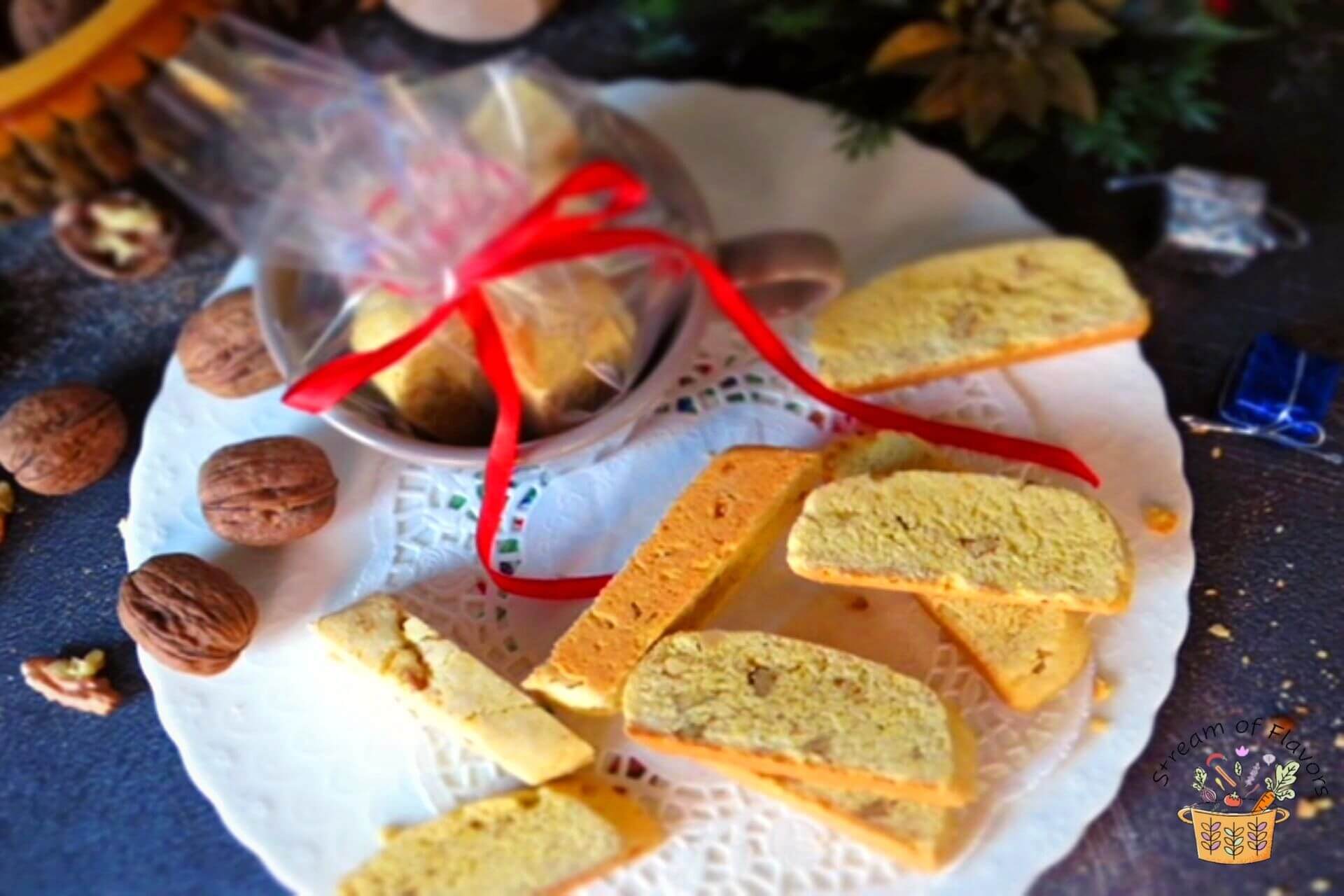
Ingredients for the Walnut Biscotti:
- Fat: Unsalted butter- if you add too much butter then the Walnut Biscotti will be soft, and too little will make them dry. Add walnut oil or olive oil for extra moisture.
- Sugar: Granulated or caster sugar- please beat with butter until light and creamy.
- Flavor: Orange zest and/or lemon adds a bright flavor; add them after you beat the butter and sugar.
- Egg: Add fresh whole eggs one at a time.
- Flour: All-purpose flour gives you the golden color, but if you want to use whole wheat flour, then use a 1:1 whole wheat and plain flour.
- Polenta: Polenta adds crunch, sweet flavor and texture to the Walnut Biscotti. Feel free to substitute with cornmeal.
- Leavening agent: Baking powder
How to make Walnut Biscotti:
- Prepare the ingredients.
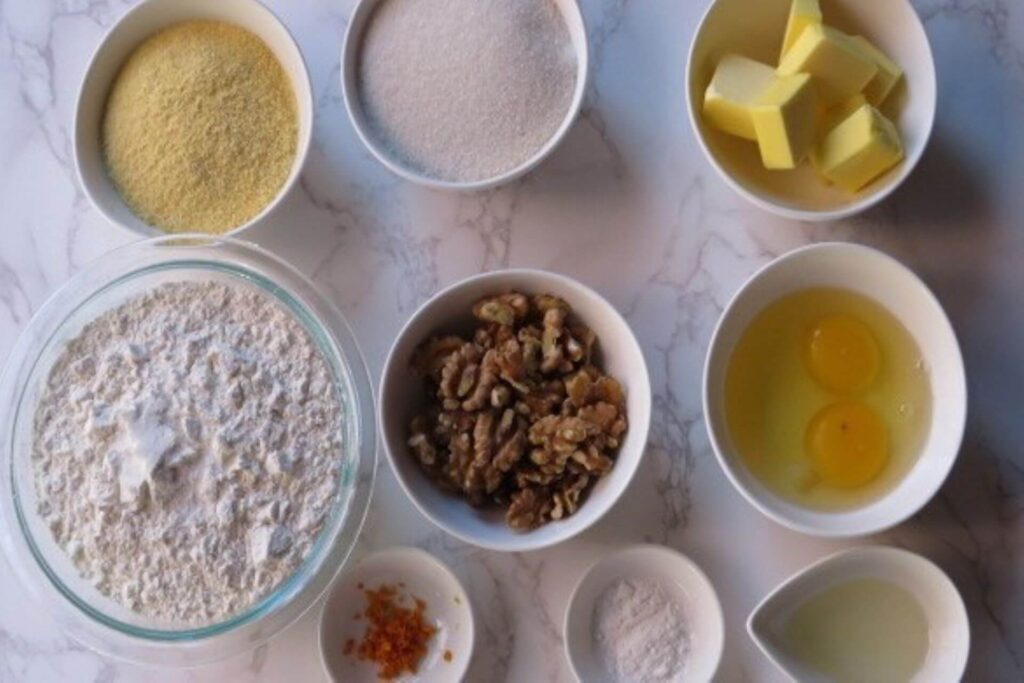
2. Preheat oven to 325 degrees F. Beat butter and sugar until light in a stand mixer using the paddle attachment.
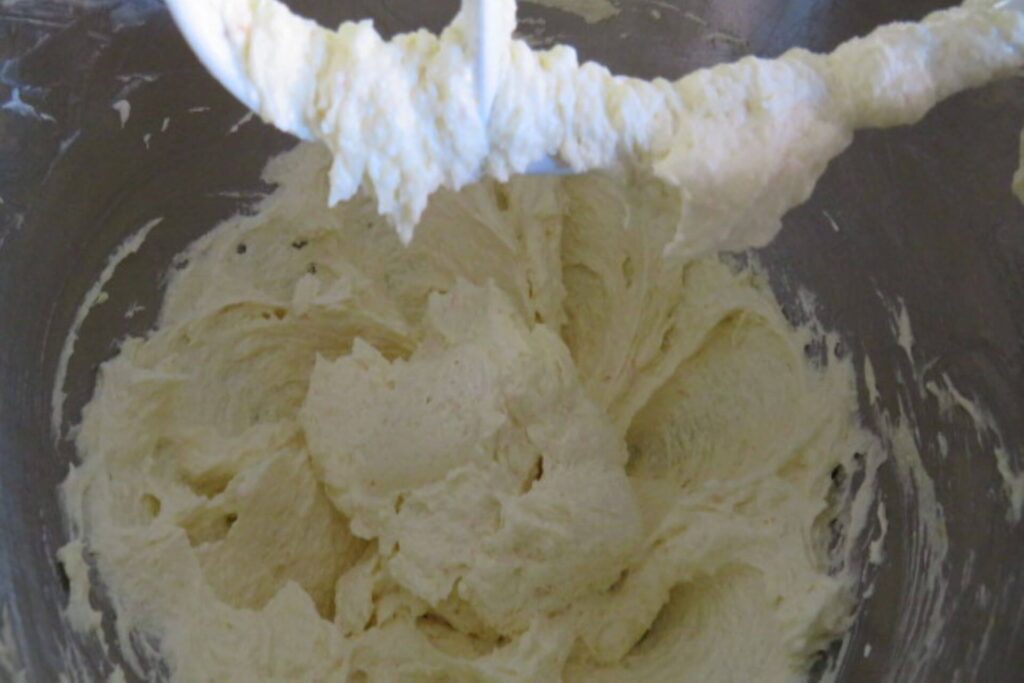
3. Add the zest and walnut oil and beat for a minute. Add eggs one by one and beat again for two minutes.
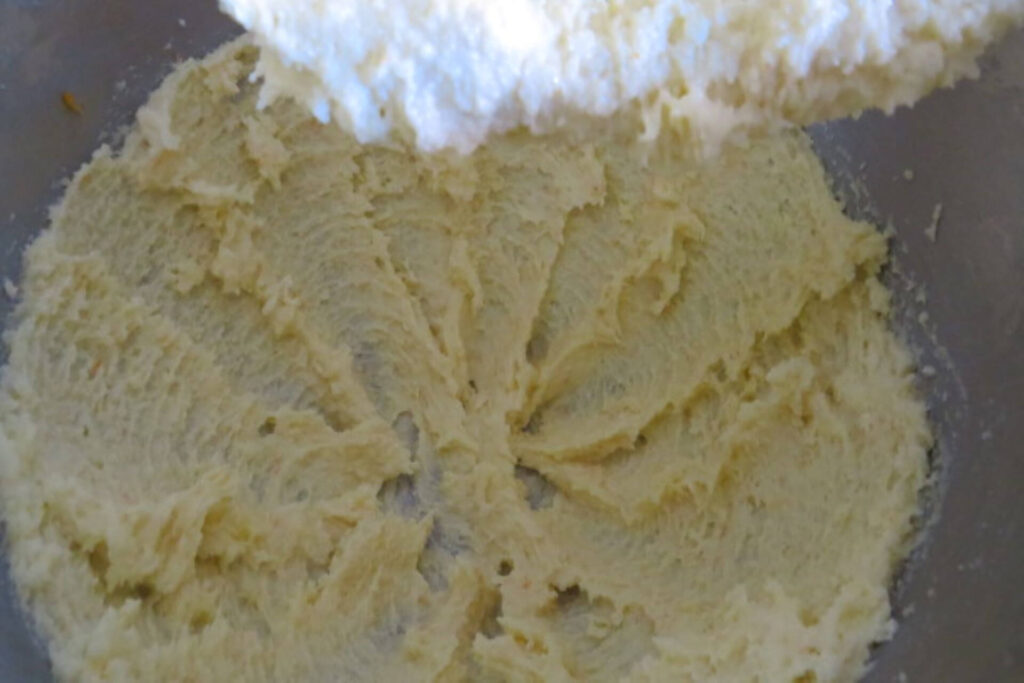
4. Sift the flour with the salt and baking powder and add gradually and mix until combined.
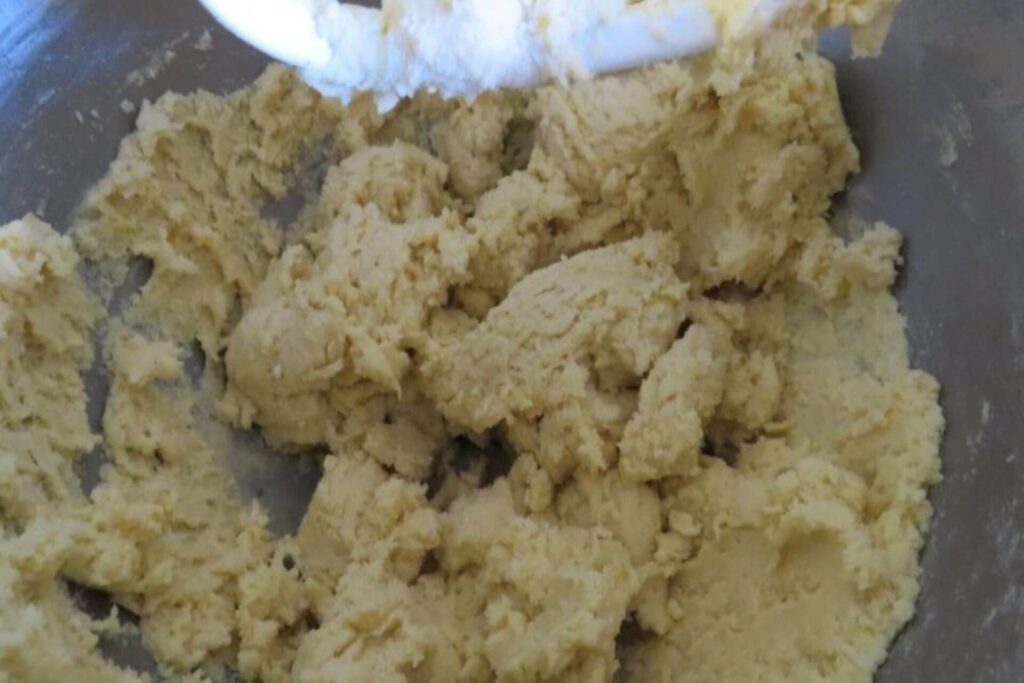
5. Add the polenta and the chopped walnuts to the dough and mix well.
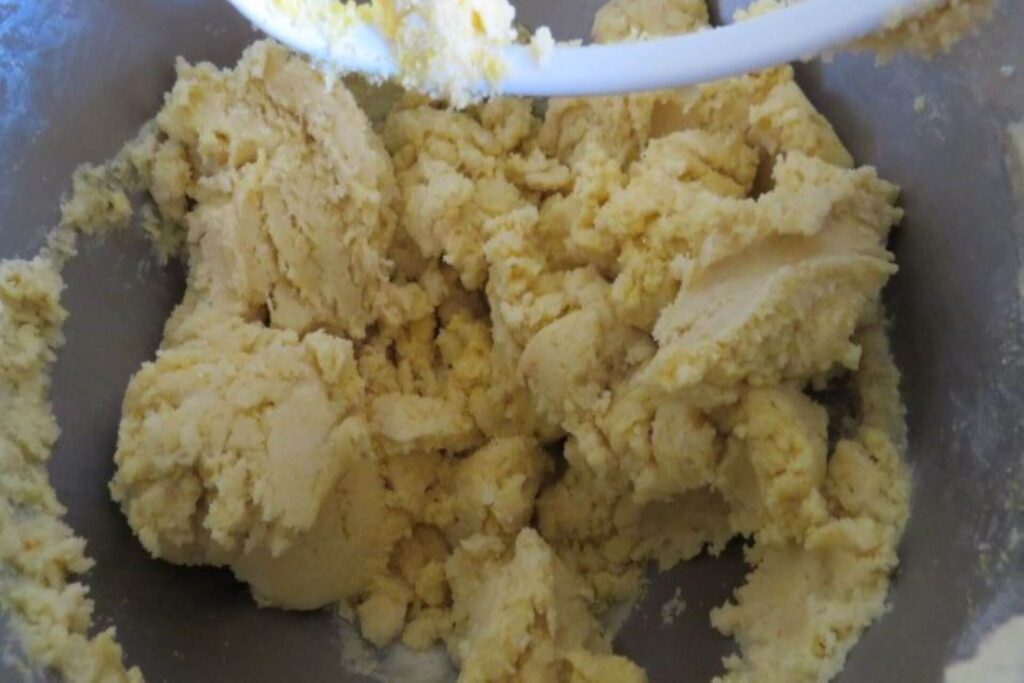
6. Divide the dough into four parts. Shape each part into a log approximately2-2½ inches wide. Flatten the top. Bake for 35-36 minutes or until golden on a nonstick mat fit into a baking tray or a nonstick tray.
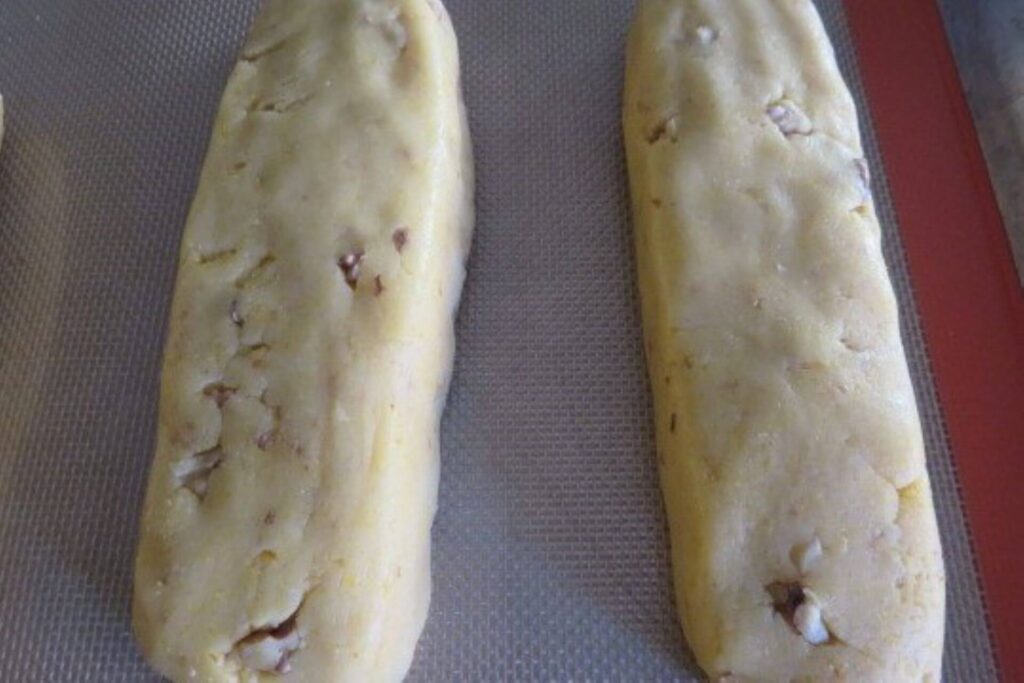
7. Remove the logs and cool them on wire racks for 10-12 minutes. Place the logs on a board and cut the log diagonally into ½inch slices using a sharp serrated knife.
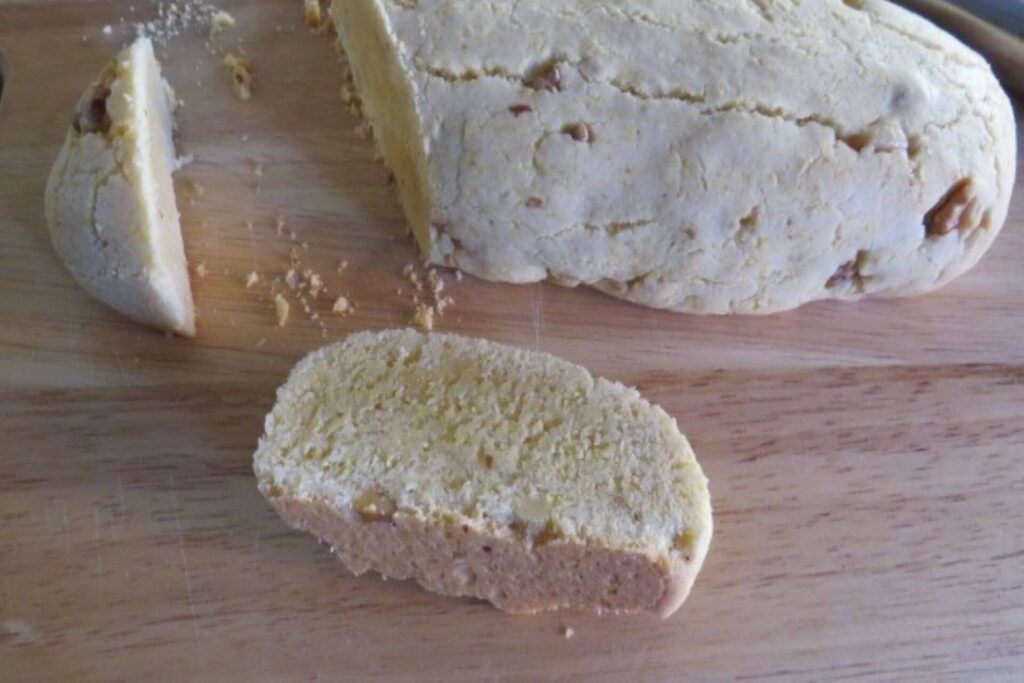
8. Place them again on the baking sheet and bake for 10 minutes. Flip the slices over and bake again for 5-10 minutes or until the slices are baked to a firm texture in the center. Remove the tray and cool the biscotti.
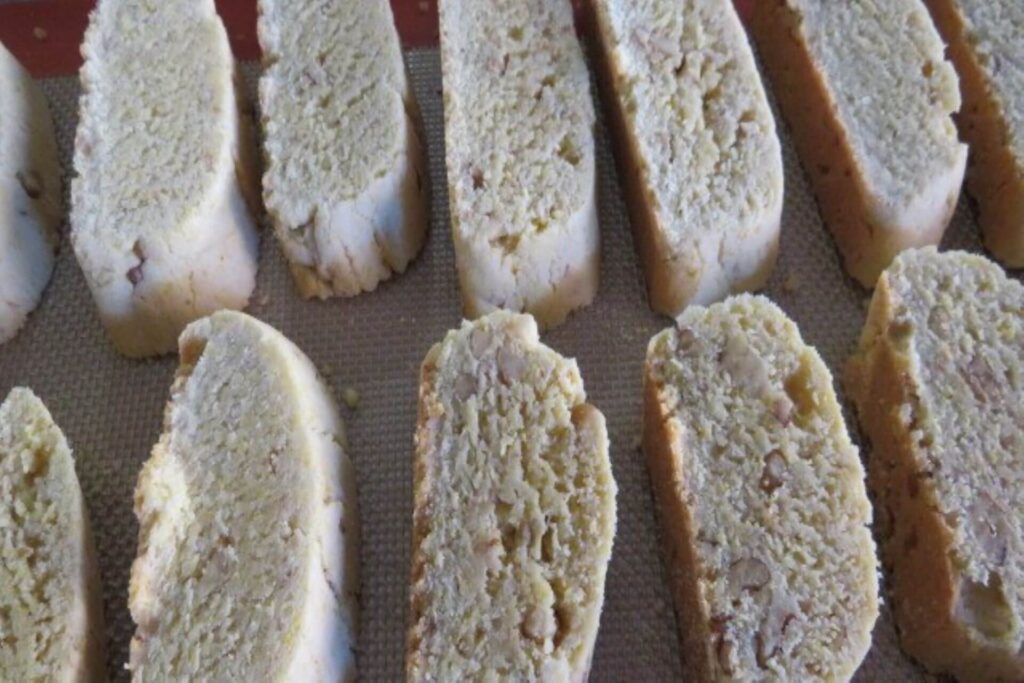
9. Serve the Walnut Biscotti with coffee or tea.
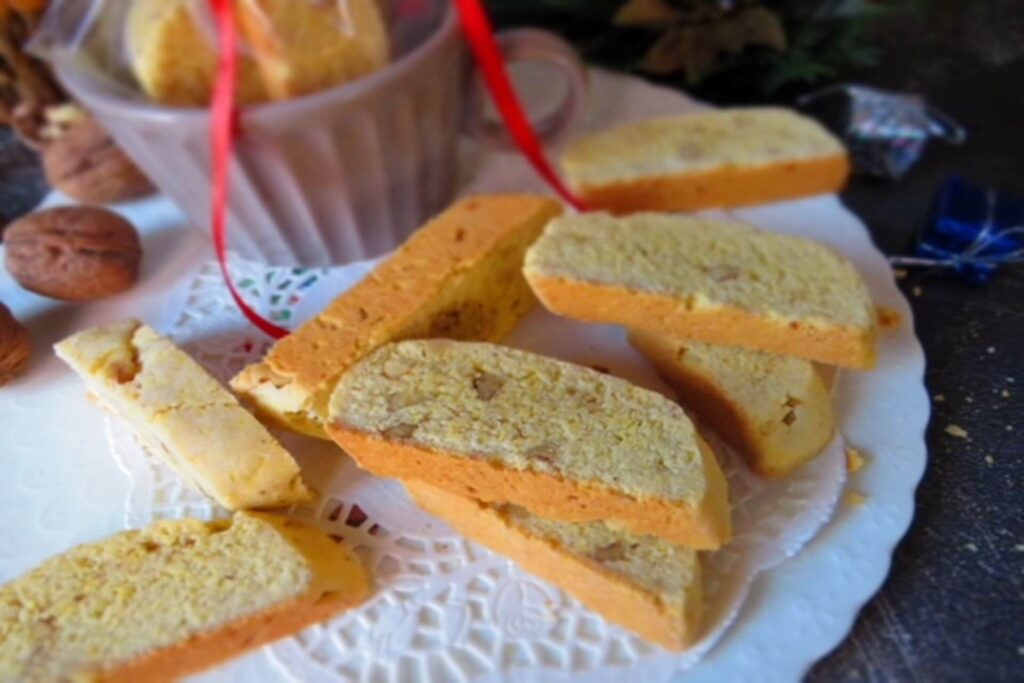
Tips:
- Walnut Biscotti, because of its simple ingredients and wide variety, can be more than a little tricky. Use a serrated knife to slice the oblong logs in a chainsaw motion to perfect slices every time.
- Thin slices take lesser time to bake and the converse holds good for longer thicker slices that take more time to bake.
- Flip the slices over after 10 minutes to ensure even baking. If using silicone mats, then they take slightly longer to bake. Please check for doneness in the center of the Walnut Biscotti, they should firm and not soft. You could also try rotating the baking sheets midway.
- Equal log sizes will result in slices that are of the same size and will promote even baking.
- If the dough is too sticky, wet your hands and shape them.
- Cool the Walnut Biscotti for at least 12 to 20 minutes after the first bake so that you can cut through them more easily.
- Slice the biscotti log diagonally at an angle for longer cookies.
Serving suggestion:
Enjoy serving the Walnut Biscotti with hot chocolate or tea, as an after dinner sweet treat or have them for breakfast dunking them in hot coffee like my husband does! You can even serve biscotti with sweet wine, à la mode with ice cream, as a parfait with cream, yogurt, and fruit, as an accompaniment to a fruit and cheese platter, and if you’re so inclined, as a super indulgent s’more.
Storage:
Walnut Biscotti will stay fresh in airtight cookie jars for 3-4 weeks at room temperature or can be frozen for three months in airtight boxes.
Other cookie recipes that you might like:
- Lime Shortbread Cookies
- Chocolate Cookies With Cream Filling
- Ghraybeh Cookies
- Ground Hazelnut Cookies
- Mexican Tea Cakes
Walnut Biscotti
Equipment
- baking trays, stand mixer
Ingredients
- 4 oz unsalted butter
- ¾ cup granulated sugar
- 1 tbsp walnut oil
- 1 tsp orange zest
- 2 egg
- 3 cup all-purpose flour
- ¼ tsp salt
- 1¼ tsp baking powder
- ¾ cup polenta
- ¾ cup walnut chopped
Instructions
- Prepare the ingredients.
- Preheat oven to 325 degrees F. Beat butter and sugar until light in a stand mixer using the paddle attachment.
- Add the zest and walnut oil and beat for a minute. Add eggs one by one and beat again for two minutes.
- Sift the flour with the salt and baking powder and add gradually and mix until combined.
- Add the polenta and the chopped walnuts to the dough and mix well.
- Divide the dough into four parts. Shape each part into a log approximately2-2½ inches wide. Flatten the top. Bake for 35-36 minutes or until golden on a nonstick mat fit into a baking tray or a nonstick tray.
- Remove the logs and cool them on wire racks for 10-12 minutes. Place the logs on a board and cut the log diagonally into ½inch slices using a sharp knife.
- Place them again on the baking sheet and bake for 10 minutes. Flip the slices over and bake again for 5-10 minutes or until the slices are baked to a firm texture in the center. Remove the tray and cool the biscotti.
- Serve the walnut biscotti with coffee or tea.
Video
Notes
- Toast the freshly cracked walnuts in a baking sheet for 5-6 minutes at 350 degrees F and chop them into small pieces for the walnut biscotti.
Nutrition


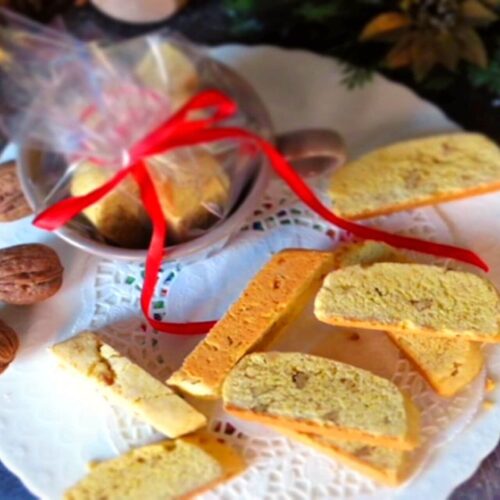
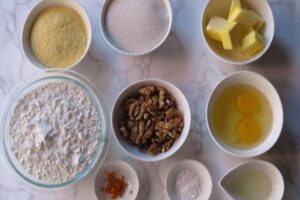
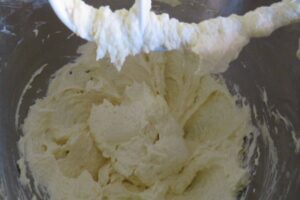
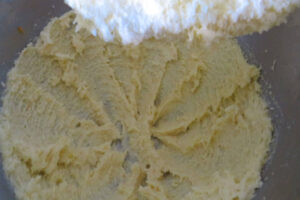
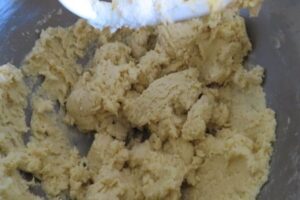
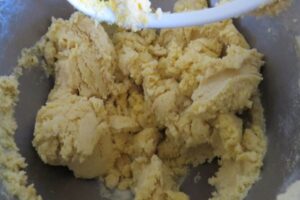
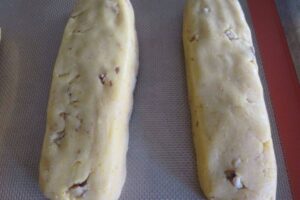
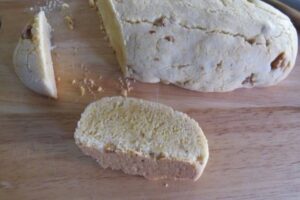
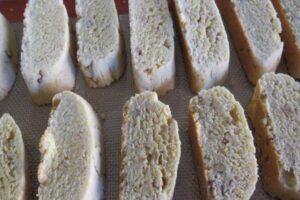
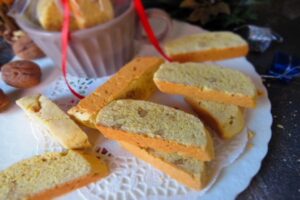





















0 Comments